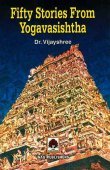Adhyayana: 22 definitions
Introduction:
Adhyayana means something in Hinduism, Sanskrit, Jainism, Prakrit, the history of ancient India, Marathi, Hindi. If you want to know the exact meaning, history, etymology or English translation of this term then check out the descriptions on this page. Add your comment or reference to a book if you want to contribute to this summary article.
Alternative spellings of this word include Adhyayan.
Images (photo gallery)
In Hinduism
Shaivism (Shaiva philosophy)
Source: Shodhganga: Temple management in the ĀgamasAdhyayana (अध्ययन) is a title given to certain Brāhmaṇas attending or assisting upacāras and are employed in Śiva temples. The Adhyayana-Brāhmaṇas are the Brāhmaṇas who chant or “study” the Veda. They are also called Veda Brāhmaṇa. “Adhyayana Brāhmaṇa” is a term frequently mentioned in the medieval inscriptions. An inscription from Chidambaram (SII 8.43) mentions that land was made over to the Adhyayana Brāhmaṇas so that they may offer services especially at the following events: “When the Nāyakar is ensconced in the Tiruttēr (Chariot) they should offer services in the tiruppuṛakkuṭai; offer services during festival days and day of tiruvvasantan, (Vasantotsava); offer svasti when the Lord arrives in the Kulottuṅgacoḻa woods, perform adhyayana during the tirumañjaṉam and offer svasti for the Etirilicoḻa tirunandavaṉa Pillayār on festival days”.

Shaiva (शैव, śaiva) or Shaivism (śaivism) represents a tradition of Hinduism worshiping Shiva as the supreme being. Closely related to Shaktism, Shaiva literature includes a range of scriptures, including Tantras, while the root of this tradition may be traced back to the ancient Vedas.
Purana and Itihasa (epic history)
Source: archive.org: Shiva Purana - English TranslationAdhyayana (अध्ययन) refers to “having studied (the excellent Vedas)”, according to the Śivapurāṇa 2.3.32 (“The seven celestial sages arrive”).—Accordingly, as the Seven Sages said to Śiva: “[...] Formerly we had performed three kinds of penance; we had studied the excellent Vedas (veda-adhyayana); we had made offerings in the fire, we had visited many holy centres; thus whatever merit we have acquired verbally, mentally and physically that entire merit has now accrued to us by your blessing in remembering us. A man who worships you always shall be blessed. How can that merit be properly described, the merit of those whom you yourself remember? [...]”.

The Purana (पुराण, purāṇas) refers to Sanskrit literature preserving ancient India’s vast cultural history, including historical legends, religious ceremonies, various arts and sciences. The eighteen mahapuranas total over 400,000 shlokas (metrical couplets) and date to at least several centuries BCE.
Pancaratra (worship of Nārāyaṇa)
Source: archive.org: Catalogue of Pancaratra Agama TextsAdhyayana (अध्ययन) or Adhyayanotsava (lit. “the cycle of recitations from the Vedas”) is the name of a festival which is celebrated during December-January, as discussed in chapters 25-26 of the Aniruddhasaṃhitā, an ancient Pāñcarātra Āgama text dealing with the annual festivals of temples and regular temple worship routines.—Description of the chapter [adhyayanotsavavidhi]: Picking up from where the preceding chapter broke off, the opening ślokas of this chapter outline the methods for celebrating some concluding routines [nīrājana] which are part of the kṛttikotsava but which are done on the day following the main celebrations (1-27). The remainder of the chapter takes up when and how praises to God through the recitation of the Vedas [adhyayana-utsava] are to be undertaken on an annual basis (18-24).

Pancaratra (पाञ्चरात्र, pāñcarātra) represents a tradition of Hinduism where Narayana is revered and worshipped. Closeley related to Vaishnavism, the Pancaratra literature includes various Agamas and tantras incorporating many Vaishnava philosophies.
In Jainism
General definition (in Jainism)
Source: Academia.edu: The Original Paṇhavāyaraṇa/Praśnavyākaraṇa DiscoveredIn the Paṇhavāgaraṇa-dasā ten adhyayanas are taught. They are as follows:
- comparison/example (uvamā),
- decision/enumeration (saṃkhā),
- teachings of the seers (isi-bhāsiyāiṃ),
- teachings of the teachers (āyariya-bhāsitāiṃ),
- teachings of Mahāvīra (mahāvīra-bhāsitāiṃ),
- the issues associated with the way of divination which involves a deity’s entering a linen cloth (khoma- pasiṇāiṃ),
- those issues associated with the way of divination which involves adeity’s entering some soft object (?) (komala-pasiṇāiṃ),
- those issues associated with the way of divination which involves a deity’s entering a mirror (addāga-pasiṇāiṃ),
- those associated with the way of divination which involves a deity’s entering the surface of one’s thumb (aṃguṭṭha-pasiṇāiṃ),
- and associated with the way of divination which involves a deity’s entering the surface of one’s arm (bāhu-pasiṇāiṃ).
Adhyayana (अध्ययन) refers to the “chapter” (of a particular work).—Cf. the Dasagīta, which is included in the collection of manuscripts at the ‘Vincenzo Joppi’ library, collected by Luigi Pio Tessitori during his visit to Rajasthan between 1914 and 1919.—[...] Either at the beginning or at the end of each chapter, the author gives a gujarati form of the original title of the Daśavaikālika chapters (adhaena, adhina, addhina, ādhyana, adhyana, all for adhyayana).

Jainism is an Indian religion of Dharma whose doctrine revolves around harmlessness (ahimsa) towards every living being. The two major branches (Digambara and Svetambara) of Jainism stimulate self-control (or, shramana, ‘self-reliance’) and spiritual development through a path of peace for the soul to progess to the ultimate goal.
India history and geography
Source: Cologne Digital Sanskrit Dictionaries: Indian Epigraphical GlossaryAdhyayana.—(SII 1), study of the Vedas. Note: adhyayana is defined in the “Indian epigraphical glossary” as it can be found on ancient inscriptions commonly written in Sanskrit, Prakrit or Dravidian languages.
Source: Heidelberg: Glory of the Tiruvanantapuram Padmanabhasvami TempleAdhyayana (अध्ययन) or Adhyayanotsava refers to the “Festival of Recitations” which is a festival celebrated in Srirangam.—During Adhyayana-utsava the Nālāyiradivyaprabandham [Naalayira Divya Prabandham] is recited and explained with oral and performative commentaries over twenty-one days. Once, during this festival, Yāmuna was listening to Tiruvaraṅka Perumāḷ Ariyar sing and dance pācurams (hymns) from the Tiruvāymoli (10.2.1) on Tiruvanantapuram. One of the verses urges everyone to go to Tiruvanantapuram.

The history of India traces the identification of countries, villages, towns and other regions of India, as well as mythology, zoology, royal dynasties, rulers, tribes, local festivities and traditions and regional languages. Ancient India enjoyed religious freedom and encourages the path of Dharma, a concept common to Buddhism, Hinduism, and Jainism.
Languages of India and abroad
Marathi-English dictionary
Source: DDSA: The Molesworth Marathi and English Dictionaryadhyayana (अध्ययन).—n (S) Reading or study (esp. of the sacred books). 2 Matter read or studied; one's reading. Ex. anabhyāsāmuḷēṃ mī a0 visaralōṃ.
Source: DDSA: The Aryabhusan school dictionary, Marathi-Englishadhyayana (अध्ययन).—n Study, reading. One's read- ing, matter read or studied.
Marathi is an Indo-European language having over 70 million native speakers people in (predominantly) Maharashtra India. Marathi, like many other Indo-Aryan languages, evolved from early forms of Prakrit, which itself is a subset of Sanskrit, one of the most ancient languages of the world.
Sanskrit dictionary
Source: DDSA: The practical Sanskrit-English dictionaryAdhyayana (अध्ययन).—[इ-ल्युट् (i-lyuṭ)]
1) Learning, study, reading (especially the Vedas); one of the six duties of a Brāhmaṇa. The study of the Vedas is allowed to the first 3 classes, but not to a Śūdra Manusmṛti 1.88.91. अध्ययनं च अक्षरमात्रपाठ इति वैदिकाः, सार्थाक्षरग्रहणमिति मीमांसकाः (adhyayanaṃ ca akṣaramātrapāṭha iti vaidikāḥ, sārthākṣaragrahaṇamiti mīmāṃsakāḥ); the latter view is obviously correct; cf. यथा पशुर्भारवाही न तस्य भजते फलम् । द्विजस्तथार्थानभिज्ञो न वेदफलमश्रुते (yathā paśurbhāravāhī na tasya bhajate phalam | dvijastathārthānabhijño na vedaphalamaśrute) || or better still Yāska's Nirukta : स्थाणुरयं भारहारः किलाभूदधीत्य वेदं न विजानाति योऽर्थम् । योऽर्थज्ञ इत् (sthāṇurayaṃ bhārahāraḥ kilābhūdadhītya vedaṃ na vijānāti yo'rtham | yo'rthajña it) (arthavid) सकलं भद्रमश्रुते नाकमेति ज्ञानविधूतपाप्मा (sakalaṃ bhadramaśrute nākameti jñānavidhūtapāpmā) || See also under अनग्नि (anagni).
2) Muttering प्रणव (praṇava) mantra; वीतरागा महाप्रज्ञा ध्यानाध्ययनसम्पदा (vītarāgā mahāprajñā dhyānādhyayanasampadā) Mahābhārata (Bombay) 12.3.49. (adhyayanaṃ praṇavajapaḥ iti ṭīkā)
3) Teaching; कृत्वा चाध्ययनं तेषां शिष्याणां शतमुत्तमम् (kṛtvā cādhyayanaṃ teṣāṃ śiṣyāṇāṃ śatamuttamam) Mahābhārata (Bombay) 12.318.17 see अध्यापनम् (adhyāpanam).
Derivable forms: adhyayanam (अध्ययनम्).
--- OR ---
Adhyayana (अध्ययन).—&c. See under अधी (adhī).
Derivable forms: adhyayanam (अध्ययनम्).
See also (synonyms): adhyaya.
Source: Cologne Digital Sanskrit Dictionaries: Shabda-Sagara Sanskrit-English DictionaryAdhyayana (अध्ययन).—n.
(-naṃ) Study, reading, especially of the sacred books; one of the six duties of a Brahman. E. adhi, iṅ to go, and lyuṭ aff.
Source: Cologne Digital Sanskrit Dictionaries: Benfey Sanskrit-English DictionaryAdhyayana (अध्ययन).—i. e. adhi-i + ana, n. Reading, study, especially of the sacred books, [Mānavadharmaśāstra] 1, 88.
Source: Cologne Digital Sanskrit Dictionaries: Cappeller Sanskrit-English DictionaryAdhyayana (अध्ययन).—[neuter] studying, reading, taking lessons from ([ablative]).
Source: Cologne Digital Sanskrit Dictionaries: Monier-Williams Sanskrit-English Dictionary1) Adhyayana (अध्ययन):—[=adhy-ayana] [from adhī] a n. reading, studying, especially the Vedas (one of the six duties of a Brāhman),
2) [from adhy-ayana > adhī] also going over, recitation, repetition (of the Veda etc.)
3) [=adhy-ayana] b etc. See adhī.
Source: Cologne Digital Sanskrit Dictionaries: Goldstücker Sanskrit-English DictionaryAdhyayana (अध्ययन):—[tatpurusha compound] n.
(-nam) Study, reading, especially of the sacred books; one of the six duties of a Brahman. E. i (iṅ) with adhi, kṛt aff. lyuṭ.
Source: Cologne Digital Sanskrit Dictionaries: Yates Sanskrit-English DictionaryAdhyayana (अध्ययन):—[adhya+yana] (naṃ) 1. n. Study.
Source: DDSA: Paia-sadda-mahannavo; a comprehensive Prakrit Hindi dictionary (S)Adhyayana (अध्ययन) in the Sanskrit language is related to the Prakrit words: Ajbhayaṇa, Ahijjaṇa.
[Sanskrit to German]
Sanskrit, also spelled संस्कृतम् (saṃskṛtam), is an ancient language of India commonly seen as the grandmother of the Indo-European language family (even English!). Closely allied with Prakrit and Pali, Sanskrit is more exhaustive in both grammar and terms and has the most extensive collection of literature in the world, greatly surpassing its sister-languages Greek and Latin.
Hindi dictionary
Source: DDSA: A practical Hindi-English dictionaryAdhyayana (अध्ययन) [Also spelled adhyayan]:—(nm) study;—[adhyāpana] studying and teaching; -[kakṣa] study, study-room; ~[śīla] studious, given to reading.
...
Kannada-English dictionary
Source: Alar: Kannada-English corpusAdhyayana (ಅಧ್ಯಯನ):—
1) [noun] a learning, reading and studying of the Vēdas, considered to be one of six duties of a Brāhmaṇa.
2) [noun] in gen. the act or process of applying the mind so as to acquire knowledge or understanding, as by reading, investigating, etc. a study.
3) [noun] careful attention to, and critical examination and investigation of, any subject, event, etc.
Kannada is a Dravidian language (as opposed to the Indo-European language family) mainly spoken in the southwestern region of India.
See also (Relevant definitions)
Partial matches: Ayana.
Starts with (+6): Adhyayana-anga, Adhyayana-bhatta, Adhyayanabhashya, Adhyayanadana, Adhyayanadanika, Adhyayanamadu, Adhyayanamamdira, Adhyayanamtaraya, Adhyayananiyama, Adhyayanapunya, Adhyayanasampradana, Adhyayanasamsthana, Adhyayanasamvritti, Adhyayanashale, Adhyayanashila, Adhyayanashilate, Adhyayanashile, Adhyayanatamda, Adhyayanatapas, Adhyayanatapasi.
Ends with (+17): Abhyadhyayana, Akhyana-adhyayana, Anadhyayana, Aranyadhyayana, Bahvadhyayana, Bhritakadhyayana, Dharanadhyayana, Gramadhyayana, Kramadhyayana, Mamala-adhyayana, Manovritti-adhyayana, Nandyadhyayana, Padadhyayana, Paryadhyayana, Pradhyayana, Pragaitihasika-manava-adhyayana, Prarambhika-adhyayana, Purvadhyayana, Sahadhyayana, Samadhyayana.
Full-text (+54): Adhyayanapunya, Anadhyayana, Adhyayanasamvritti, Adhyayanatapasi, Yavadadhyayanam, Ahijjana, Nalinigulma, Vedadhyayana, Adhyayana-anga, Satkarman, Vetattiyayanam, Tulanatmaka, Adhyayanavritti, Paryadhyayana, Abhyadhyayana, Ajbhayana, Bahvadhyayana, Adhyayana-bhatta, Adhyayanatapas, Anadhyayadivasa.
Relevant text
Search found 40 books and stories containing Adhyayana, Adhy-ayana; (plurals include: Adhyayanas, ayanas). You can also click to the full overview containing English textual excerpts. Below are direct links for the most relevant articles:
Garga Samhita (English) (by Danavir Goswami)
Verse 5.12.3 < [Chapter 12 - Pancajana’s Previous Birth]
Verse 5.9.12 < [Chapter 9 - The Happiness of the Yadus]
Taittiriya Upanishad Bhashya Vartika (by R. Balasubramanian)
Verse 2.634 < [Book 2 - Brahmavallī]
Verse 1.149-150 < [Book 1 - Śīkṣāvallī]
Verse 1.144 < [Book 1 - Śīkṣāvallī]
Chaitanya Bhagavata (by Bhumipati Dāsa)
Verse 2.1.276 < [Chapter 1 - The Beginning of the Lord’s Manifestation and His Instructions on Kṛṣṇa-saṅkīrtana]
Verse 2.1.272 < [Chapter 1 - The Beginning of the Lord’s Manifestation and His Instructions on Kṛṣṇa-saṅkīrtana]
Verse 2.1.275 < [Chapter 1 - The Beginning of the Lord’s Manifestation and His Instructions on Kṛṣṇa-saṅkīrtana]
Sankhayana-grihya-sutra (by Hermann Oldenberg)
Yogadrstisamuccaya of Haribhadra Suri (Study) (by Riddhi J. Shah)
Chapter 1.6 - From Ācārya Tulsi to Modern Times < [Chapter 1 - The Jain Yoga Tradition—A Historical Review]
Chapter 1.7 - Adhyātma, Bhāvanā, Dhyāna, Svādhyāya and Saṃyama Yoga < [Chapter 1 - The Jain Yoga Tradition—A Historical Review]
Later Chola Temples (by S. R. Balasubrahmanyam)
Temples in Udaiyarkoyil < [Chapter II - Temples of Kulottunga I’s Time]
Related products


